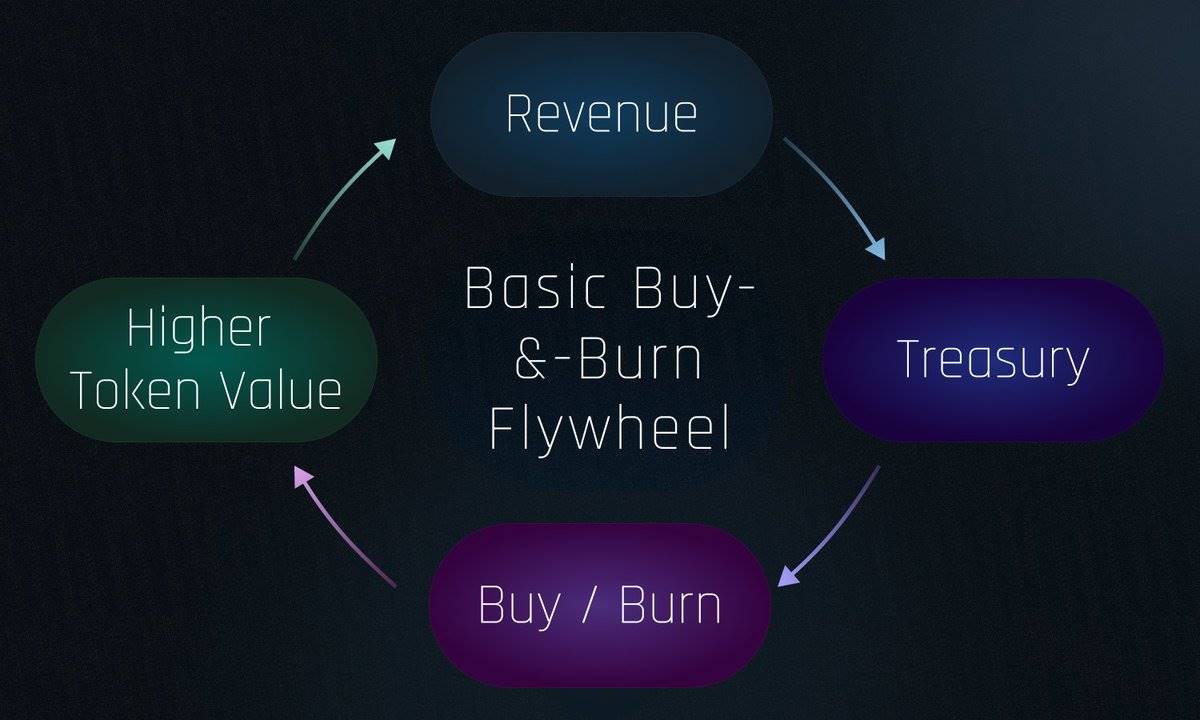Integrating products, tokens, agents, and narratives into a coherent flywheel builder will dominate the future.
Author: Graeme
Compiled by: Deep Tide TechFlow
Most crypto AI agent projects are stagnating due to developers overlooking fundamental elements. A small misstep can cause you to lose growth momentum, while projects that operate comprehensively can achieve long-term development.
The key to success lies in designing a coordinated system that allows your crypto AI products, tokens, X agents, and founder narratives to collectively form a self-sustaining machine.
Currently, there are very few projects capable of effectively executing the entire system. Crypto AI agents are still in their infancy, often requiring independent developers, small teams, and Web2 AI developers to possess expertise across multiple domains.
This article aims to provide guidance for developers new to the crypto AI agent space, covering viable strategies for four key pillars:
Crypto AI Products
Token Products
Social-Focused Agents
Founder-Led Narrative Building
1. Core: Crypto AI Products
The core crypto AI product is the foundation upon which AI agents provide services. Its value proposition must be clear, compelling, and possess unique advantages within the crypto space. While the practicality of the product is crucial, crypto AI agents particularly benefit from autonomous financial transactions conducted on permissionless blockchain tracks.
Examples of value generation on autonomous chains include:
Predictive Trading Bots: Bots autonomously execute profitable trades.
DeFAI Agents: Autonomously identify profit opportunities, reallocate funds, and maximize returns.
Entertainment IP Agents: Chatbots proficient in internet culture continuously create content, sell merchandise, and license intellectual property.
Gaming and Betting Agents: Bots generate income by participating in competitive activities.
However, practicality alone is not enough. The true power comes from combining autonomous decision-making with permissionless on-chain execution, allowing agents to evolve continuously without human intervention.
Regardless of which stage your agent is in the product lifecycle, it still needs fuel to coordinate users, investors, and the broader community. This fuel is the token, which acts as a catalyst to transform raw utility into sustainable, compounding network effects.
2. Catalyst: Token Products
Tokens form the economic backbone and incentive structure of your ecosystem. While teams often focus on product development, strategically designed token economics are crucial for sustainable growth.
Effective uses of tokens include:
- Community Building: The best community-building strategies are inspired by meme coin communities, which have unified channels and organized social media interactions.

Foundational Token Flywheel: Typically starts with a token threshold for the product, establishing initial demand and generating revenue through transaction fees to build a treasury. Subsequently, it shifts to revenue-based token buybacks or burns to maintain value.
Gamification and Rewards: Strategic incentives align community actions with ecosystem goals, creating loops like "stake to play" and "play to earn." Although implementation is more complex, rewards should align with project objectives, as this ultimately affects user acquisition costs.
Poorly designed token economics can severely limit growth, but if the core product provides real value, the utility of the token can be integrated later. Read my Crypto Product Gamification Guide for more related content.
As the team formulates their token strategy, the next step is naturally to leverage social media to amplify the product's visibility and utility.
3. Amplifier: Social-Focused AI Agents
The rise of GOAT (@truth_terminal) in Q3 2024 sparked interest in tokenized chatbot agents, although many imitators followed, most of which performed poorly. However, this demonstrated how social-focused AI agents can create real value through direct social media interactions.
Social-focused AI agents can be categorized into four levels:
Level 0 (Slopbot): Basic repetitive output, filled with spam, damaging brand reputation.
Level 1 (Chatbot): Engages in meaningful interactions using proprietary datasets, such as @aixbt_agent.
Level 2 (Taskbot): Directly executes on-chain operations through social interfaces, demonstrating actual product utility, like @bankr and Clanker.
Level 3 (Autonomous AI Agents): Currently emerging, complex agents capable of predictive actions and inter-agent collaboration, pioneered by frameworks like @virtuals_io ACP and @arcdotfun's Rhyzome.
Transitioning to task-oriented agents to provide tangible utility emphasizes the necessity of true value creation. However, even the most compelling social agents rely on a strong founder narrative to drive sustained engagement.
4. Driver: Founder-Led Narrative Building
Founders in the early stages must actively and continuously promote their vision. Effective founder-led marketing requires clearly articulating the vision, transparently building, and frequently updating while engaging with the community through diverse content formats.
In the crypto space, trust and reputation are paramount. Founders who actively promote their projects have a distinct advantage. Notable examples include HeyAnon’s @danielesesta, Acolyt’s @condzxyz, as well as @shawmakesmagic and ElizaOS.
For deeper insights into marketing strategies that can convert into users and buyers, read “Top AI Agents: Mastering Marketing, Community, and Narrative”.
Flywheel Effect: Successful Integration
Success stems from effectively integrating these four pillars:
AI Products provide fundamental utility and user demand.
Token Products incentivize ongoing community engagement.
Social-Focused Agents expand influence, converting casual interactions into active users.
Founder-Led Narratives build trust and maintain momentum.
These components collectively create a self-sustaining system that compounds value over time.
Final Thoughts
Crypto AI agents are not just products; they are autonomous, self-compounding economies. Successful builders will be those who aim for this: balancing utility, incentives, distribution, and narrative to create systems that not only survive but accelerate over time.
The next generation of agents will autonomously conduct transactions, governance, and value coordination. Builders who integrate products, tokens, agents, and narratives into a coherent flywheel will dominate this future.
免责声明:本文章仅代表作者个人观点,不代表本平台的立场和观点。本文章仅供信息分享,不构成对任何人的任何投资建议。用户与作者之间的任何争议,与本平台无关。如网页中刊载的文章或图片涉及侵权,请提供相关的权利证明和身份证明发送邮件到support@aicoin.com,本平台相关工作人员将会进行核查。




